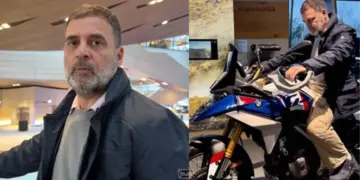By: Priyanka Saurabh
The current tensions on the Russia-Ukraine border indicate the threat of a major security crisis for the region. This crisis has the potential to turn into a widespread conflict. Ukraine says Russia has amassed about 90,000 troops on the border, and US intelligence reports say a Russian invasion of Ukraine is possible anytime. Efforts to include Ukraine in NATO have been going on for many years and have only recently gained momentum. Russia has declared such a move a “red line”, with Moscow worried about US-led military alliances spreading to its doorstep.
It is not easy to learn of Russia’s intentions and prevent it from pursuing its plans. Not only this, imposing sanctions on Russia may also not be enough to stop it. Nevertheless, Russia has insisted that it is not a party to the conflict and therefore not bound by the terms set out in the Minsk II Agreement. During the United Nations Security Council meeting in May 2021, India indicated its support for Russia, a traditional partner, on the issue of Ukraine. India has advocated for political and diplomatic solutions that protect the legitimate interests of all countries in the region and ensure long-term peace and stability in Europe and beyond. The way forward can be decided only through peaceful dialogue for a permanent solution acceptable to all concerned.
Last November, India voted against a Ukrainian-sponsored resolution at the United Nations condemning alleged human rights violations in Crimea and backing long-time ally Russia on the issue. India called for a “peaceful resolution of the situation through sustained diplomatic efforts for long-term peace and stability in the region and beyond”. Soon after the accession, India refrained from voting on a resolution in the United Nations General Assembly that sought to condemn Russia.
In 2020, India voted against a Ukraine-sponsored resolution at the United Nations General Assembly, which sought to condemn alleged human rights violations in Crimea. India’s position is largely rooted in neutrality and has adapted itself to the post-2014 status quo on Ukraine. The Russian invasion put pressure on India to choose between the Western Alliance and Russia.
Maintaining strong ties with Russia serves India’s national interest. India will have to maintain a strong strategic alliance with Russia, as a result, India cannot engage in any western strategy aimed at isolating Russia. The S-400 is likely to result in CATSA (Countering America’s Adversaries Through Sanctions Act) sanctions on India by the US. An agreement between the US and Russia could affect Russia’s relations with China. This could allow India to expand its efforts to re-establish ties with Russia.
The issue with Ukraine is that the world is increasingly interconnected economically and geopolitically. Any improvement in Russia-China relations will have an impact on India. The strong Indian diaspora in the region is also being impacted, threatening the lives of thousands of Indian students. International cooperation is needed to resolve the ever-increasing conflict between Russia and Ukraine. Both countries should refrain from any step that increases the tension. The US, along with other Western countries, should intensify the press to revive the peace process through diplomatic channels to de-escalate tensions between Ukraine and Russia.
Ukraine must focus on working with its allies, France and Germany, and persuade the Russian government to withdraw aid for its proxy. Russian military expansion into Ukraine may be halted on geo-economic grounds, particularly the Nord Stream Pipeline (Normandy format, a diplomat created to find a peaceful solution to the conflict in Ukraine caused by Russia’s military invasion in June 2014). group. could devise a way to solve the crisis.
Minsk II Agreement was for the Development of Peace in the Region. This was a 13-point agreement involving representatives of Russia, Ukraine, Organization for Security and Co-operation in Europe and it was signed in 2015. The main objective of the agreement is the Donbas region of Ukraine agreement aimed to take several steps regarding military and political reforms to establish peace in the disputed regions of Donetsk and Luhansk in Ukraine to defuse ongoing tensions. Ukraine’s internal disturbances need to be rectified.
The writer is Research scholar, poetess, freelance journalist, and columnist (Twitter- https://twitter.com/pari_saurabh)




